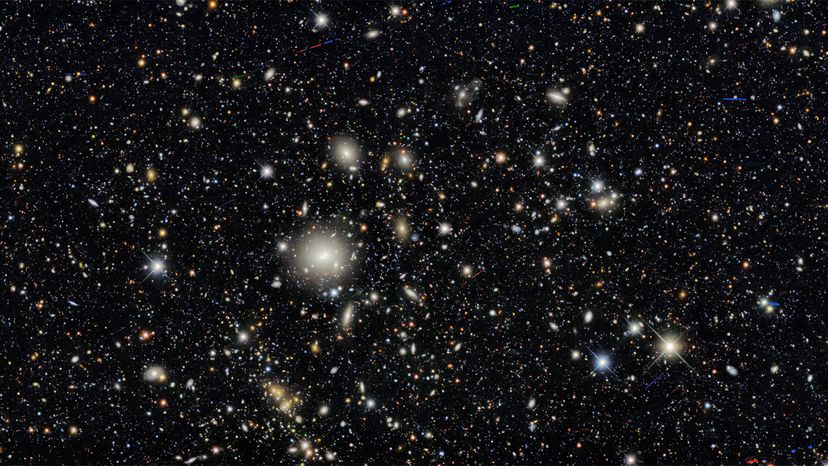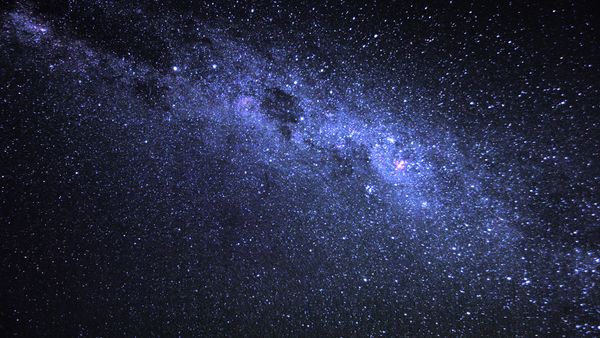The two studies might help to bolster the case for early dark energy, but one of the researchers involved says he still isn't entirely convinced and cautions that more work is needed to come to a clear conclusion.
"I have been skeptical about early dark energy models due to problems that they face in matching high-precision measurements of the large-scale distribution of galaxies and matter in the universe ('large-scale structure', or LSS)," Columbia University assistant professor of physics J. Colin Hill, co-author of the ACT team's study, notes in an email. (Hill's questioning of the concept is reflected in this paper that he co-authored in 2020, and in a later paper as well, and he also mentions another paper by other researchers that raises similar complications.)
"The takeaway from the three papers linked above is that the early dark energy models that fit the CMB data and the Riess, et al., H0 data yield predictions for LSS that do not match the data from these surveys," Hill writes in the email. "Thus, we concluded that a different theoretical model is probably needed, or at least some modification of the early dark energy scenario."
In the new study that Hill and ACT colleagues just posted, they didn't consider LSS data in the analysis, and instead focused almost exclusively on CMB data. "The goal was really to see if Planck and ACT CMB data gave consistent results in the early dark energy context. We found that they give somewhat different results, which is a major puzzle that we are now hard at work trying to understand. From my perspective, the LSS problem for the early dark energy scenario remains unsolved."
"In addition, the Planck data on their own (which remain the most precise data set in cosmology) don't show a preference for early dark energy," Hill explains. "Thus, despite the hints that we have seen in the ACT data for early dark energy, I remain cautious about whether this model could really be the final story. We'll need more data to find out."
If it existed, early dark energy would have been similar to the force that is believed to be driving the universe's current rate of expansion. But it still would require a significant rethinking of the theoretical model.
"The main difference is that this early dark energy must play a role only for a brief period in cosmic history, and then must 'vanish'," Hill says. "To achieve this, we construct particle physics models of a new field (technically, an axion-like field) that acts to briefly accelerate the expansion of the universe prior to recombination, but then rapidly fades away and becomes irrelevant."
"In contrast, the current leading picture for standard dark energy is that it is simply a cosmological constant, likely sourced by vacuum energy," Hill continues. "This form of energy does not change with time. It is possible, however, that standard dark energy could be due to some new fundamental field that we have not yet understood. In this case, it may well be time-evolving, and it could thus bear some similarity to the early dark energy model discussed above."
"Again, we'll need more data to probe these questions more precisely, and hopefully find out answers in the coming decade," Hill says. "Fortunately, many powerful experiments are coming online soon." He mentions facilities such the Simons Observatory , which will study CMB, as well as the Rubin Observatory and the Euclid and Roman space telescopes, which will gather new information about LSS. "It should be very exciting to see what we find," he says.
Here's a YouTube video in which Hill discusses early dark energy:
Starkman says it's important to be careful with such "extraordinary" claims, unless the evidence is clear and compelling. As he points out, there's evidence against EDE as well. "The current results show increasing tensions between two experimental data sets of the observation of the cosmic microwave background — from the European Space Agency's Planck satellite which flew in the early part of the last decade, and from the current Atacama Cosmology Telescope. The former seems not to support the idea of early dark energy, while the latter now does. Such tensions between experiments are common and frustrating. It is tempting to say that more data from ACT will settle the matter, but simply overwhelming the completed Planck data with more ACT data will not explain why the Planck data does not favor EDE. The tension seems likely to require a revised understanding of one of these experiments in order to provide a clear case one way or another."
Wendy Freedman, a professor of astronomy and astrophysics at the University of Chicago who's worked on measuring cosmic expansion, thinks it's important to pursue various alternative models.


